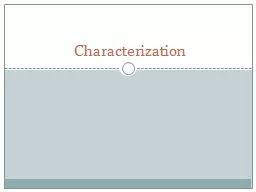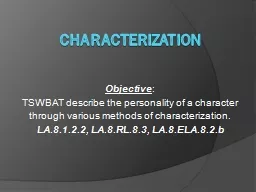PPT-Library Characterization
Author : tawny-fly | Published Date : 2017-12-20
Divya Akella Abhishek Roy University of Virginia Motivation for std cell characterization Create high quality models of a std cell library which can accurately emulate
Presentation Embed Code
Download Presentation
Download Presentation The PPT/PDF document "Library Characterization" is the property of its rightful owner. Permission is granted to download and print the materials on this website for personal, non-commercial use only, and to display it on your personal computer provided you do not modify the materials and that you retain all copyright notices contained in the materials. By downloading content from our website, you accept the terms of this agreement.
Library Characterization: Transcript
Download Rules Of Document
"Library Characterization"The content belongs to its owner. You may download and print it for personal use, without modification, and keep all copyright notices. By downloading, you agree to these terms.
Related Documents














